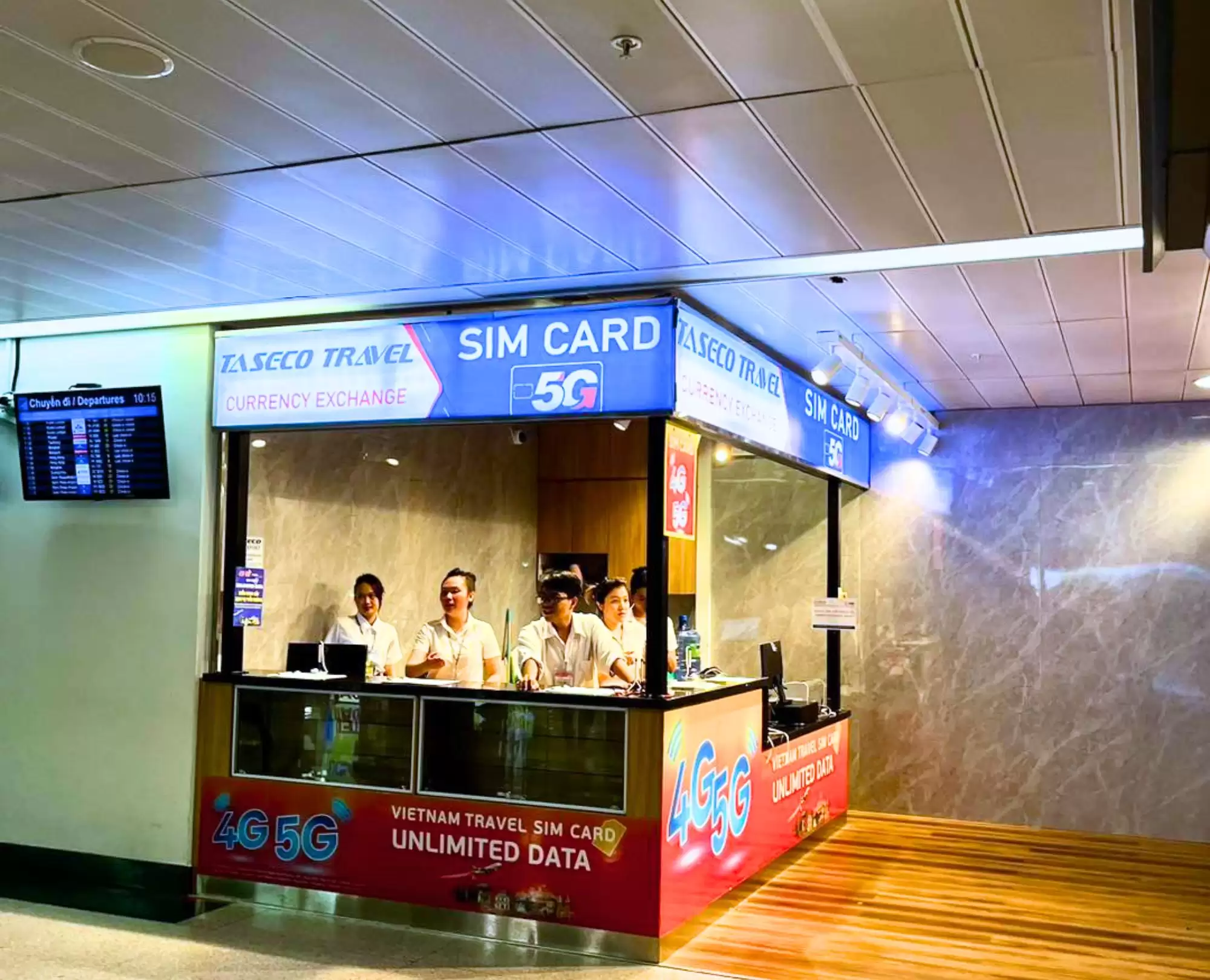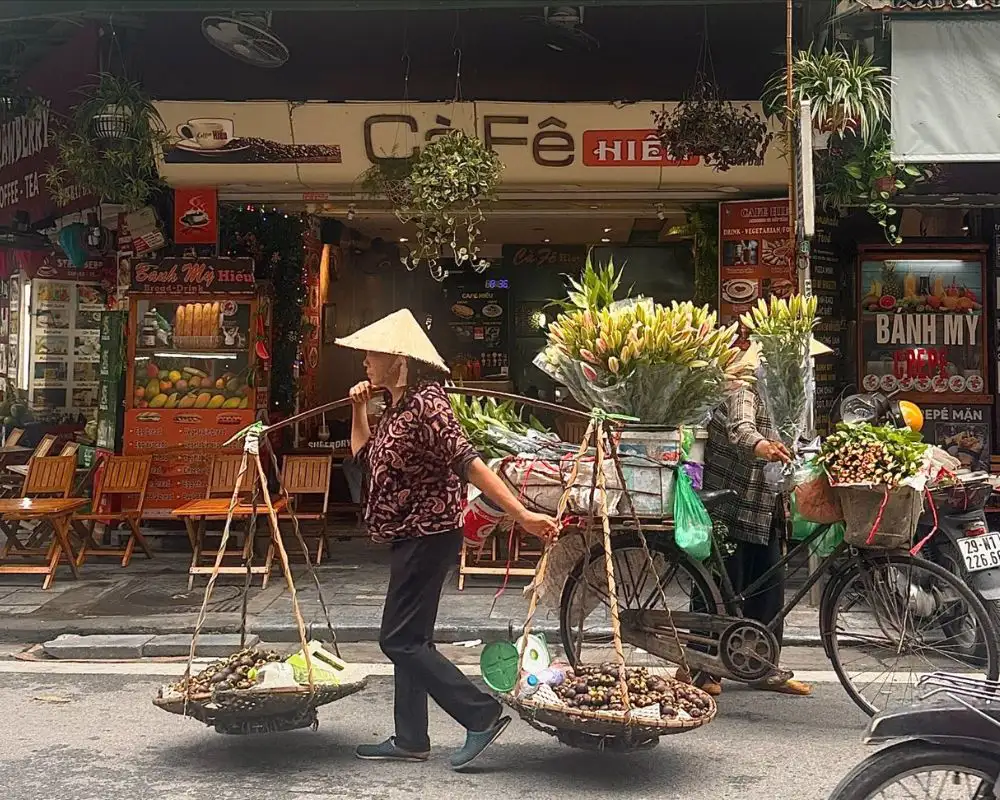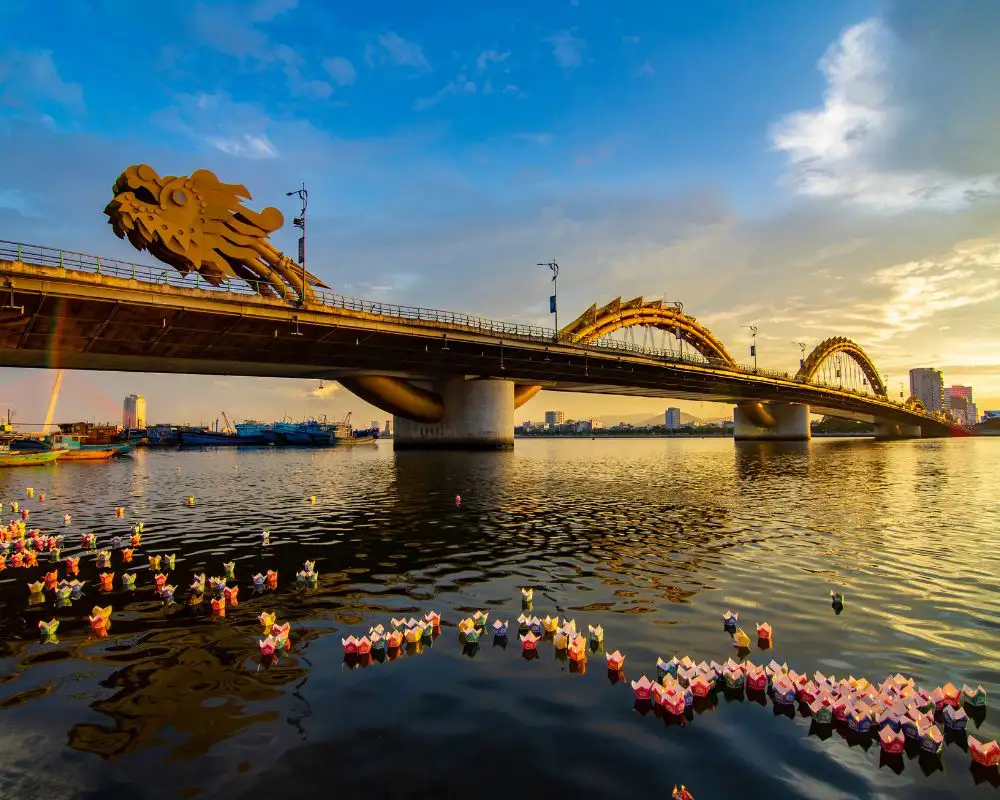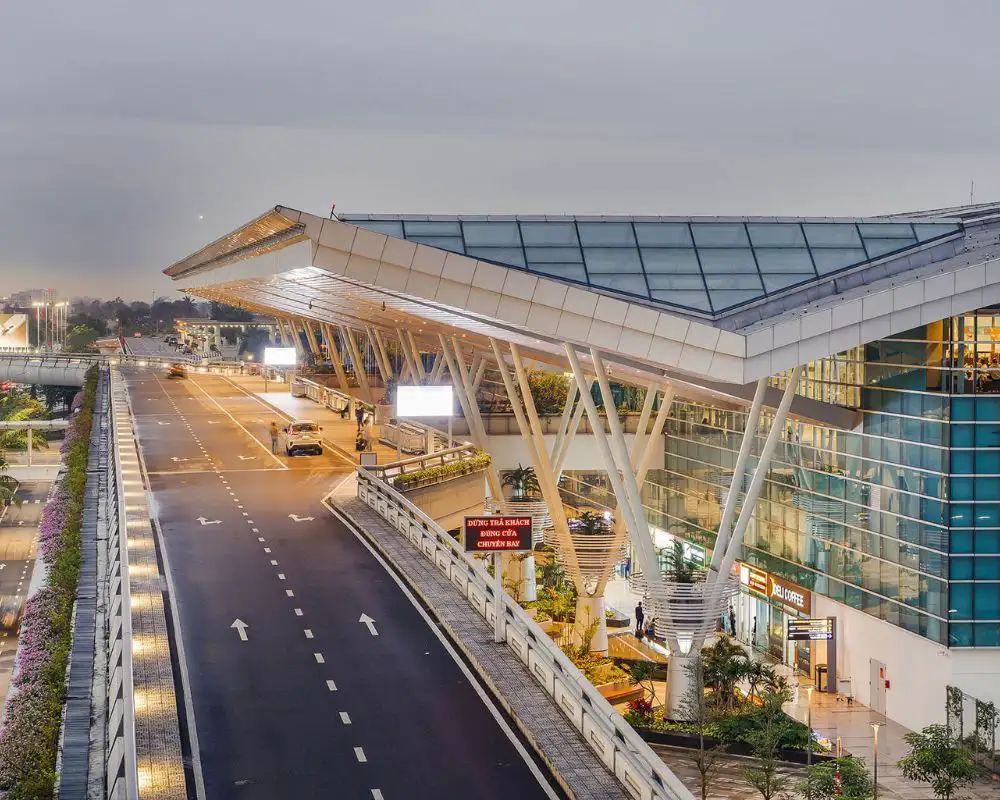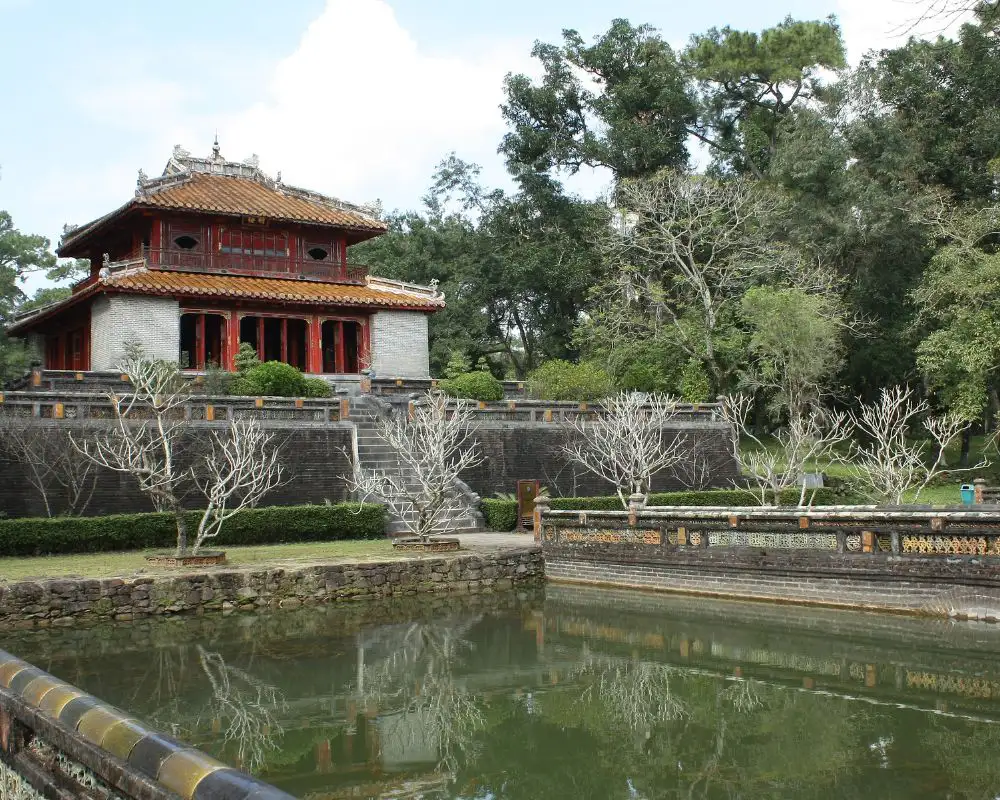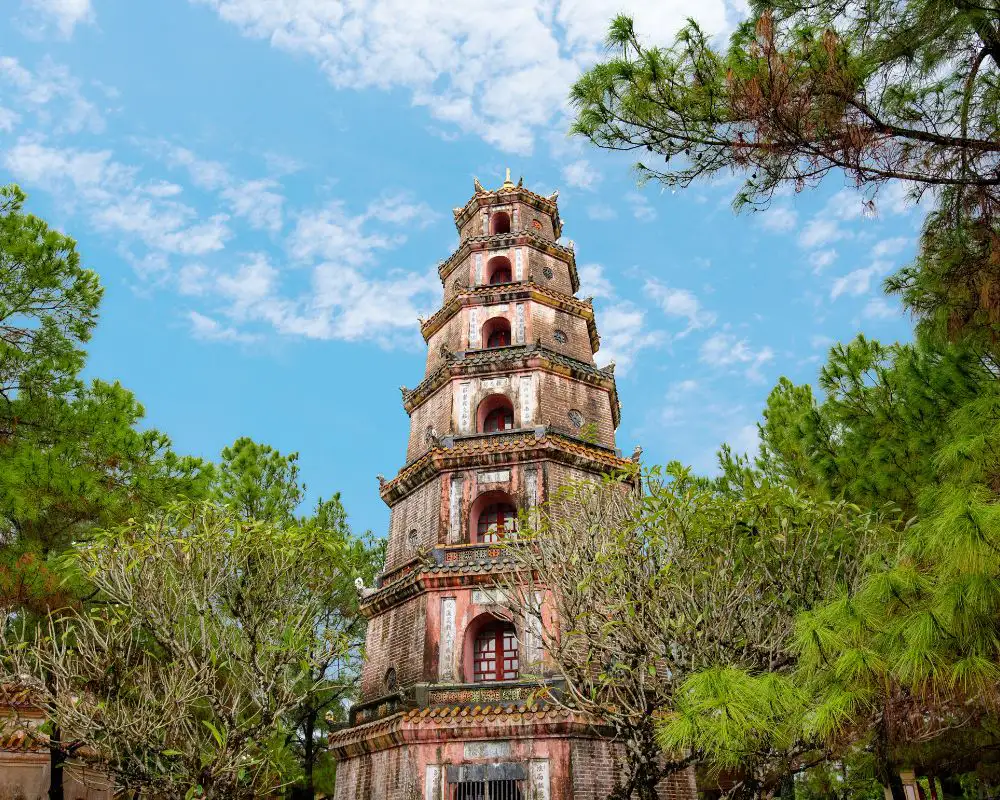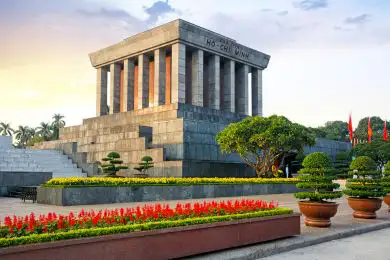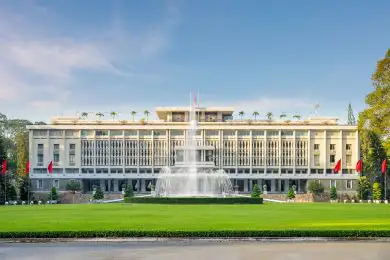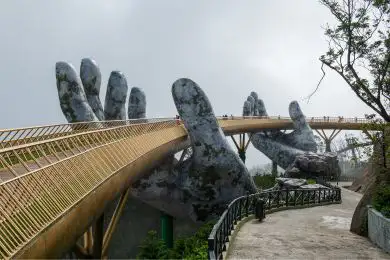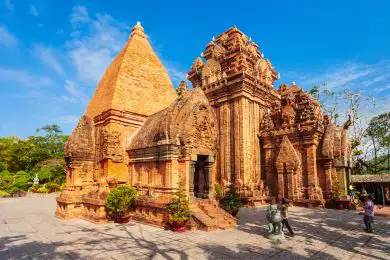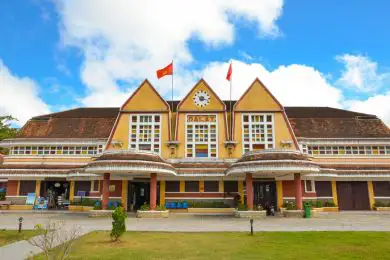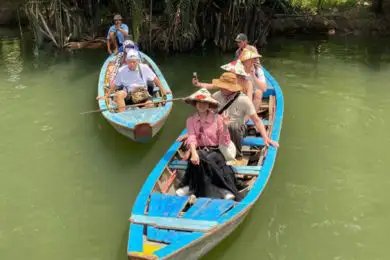Phong Nha-Ke Bang National Park, located in Quang Binh Province, Central Vietnam, is a premier destination for nature enthusiasts and adventure seekers. Recognized as a UNESCO World Heritage site, this park is celebrated for its awe-inspiring karst landscapes, extensive cave systems, and rich biodiversity. With a geological history spanning over 400 million years, Phong Nha-Ke Bang is not only a natural treasure of Vietnam but also one of the most significant geological and biological regions in the world.
You can immerse themselves in a variety of thrilling activities, from exploring vast and mysterious caves to hiking through lush forests and admiring the breathtaking scenery. This article will guide you through Phong Nha-Ke Bang National Park: A Comprehensive Guide, showcasing the must-see attractions and exciting activities that promise an unforgettable adventure.
Introduction to Phong Nha-Ke Bang National Park
Nestled in the heart of Vietnam, Phong Nha-Ke Bang is approximately 500 kilometers south of Hanoi and 260 kilometers north of Hue. The park is situated near the border with Laos, making it a significant ecological corridor in the region.
Phong Nha-Ke Bang National Park is a renowned UNESCO World Heritage site located in the Quang Binh Province of Central Vietnam. Spanning over 885 square kilometers, this park is celebrated for its stunning karst landscapes, extensive cave systems, and rich biodiversity. It is an essential destination for nature enthusiasts, adventure seekers, and those interested in Vietnam’s natural heritage.
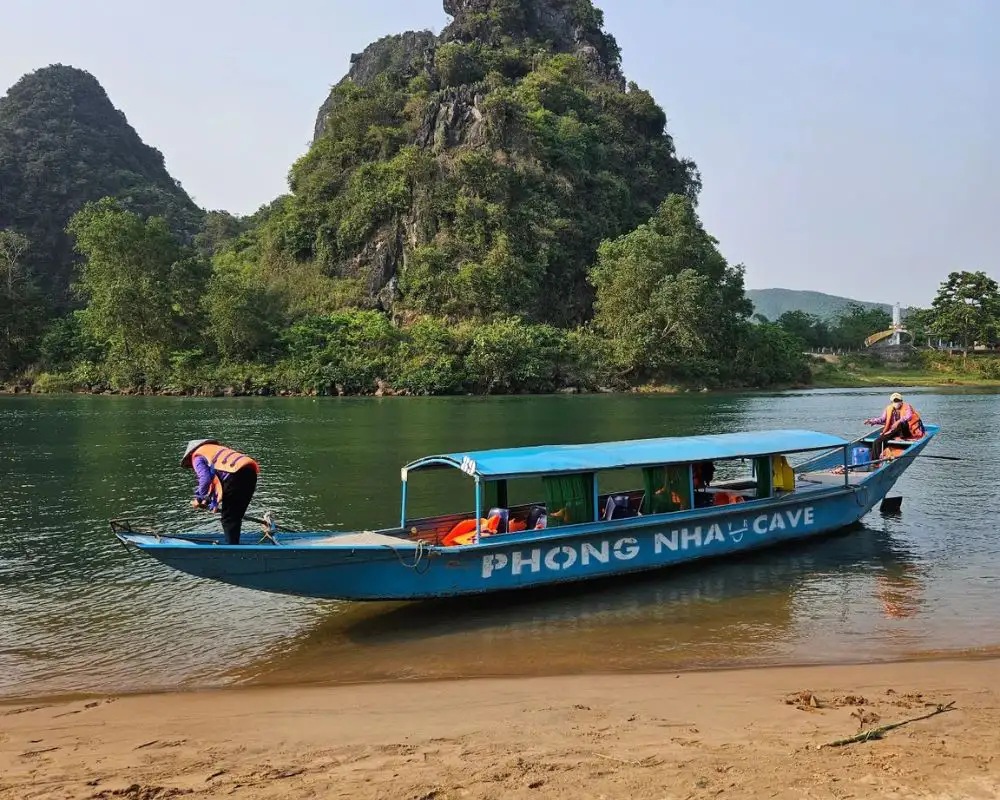
Recognized as a UNESCO World Heritage site in 2003, Phong Nha-Ke Bang is notable for its ancient karst landscapes that date back over 400 million years. The park is also home to Asia’s longest river cave and some of the world’s most magnificent subterranean systems.
The terrain of Phong Nha-Ke Bang is predominantly composed of limestone karst mountains, interspersed with dense tropical forests, rivers, and valleys. The park’s rugged landscapes offer a diverse range of habitats, contributing to its rich biodiversity.
Biodiversity in Phong Nha National Park
Flora
Phong Nha-Ke Bang boasts a diverse array of plant species, including many endemic and rare varieties. The park’s tropical forests are home to over 2,500 plant species, offering a haven for botanists and nature lovers.
Fauna
Endangered Species
Best Time To Visit Phong Nha-Ke Bang National Park
Phong Nha-Ke Bang experiences a tropical monsoon climate with distinct dry and rainy seasons. Knowing the climate helps plan the best time to visit.
Dry Season
From February to August, the weather is dry and ideal for outdoor activities like caving, hiking, and boating. Temperatures range from 25°C to 35°C, providing warm and pleasant conditions.
Rainy Season
From September to January, the park experiences heavy rainfall and occasional storms. This can make some activities challenging and restrict access to certain areas due to flooding.

Monthly Breakdown
- February to April: Mild and dry, perfect for caving and hiking.
- May to August: Hot with occasional showers, ideal for all activities.
- September to November: High rainfall, less ideal for outdoor activities.
- December to January: Cooler and wet, but possible to visit with proper planning.
What to do in Phong Nha-Ke Bang national park?
Exploring the Caves
Phong Nha Cave
Known for its underground river and impressive rock formations, Phong Nha Cave is a must-visit. Tours typically involve a boat ride through the cave, showcasing its vast chambers and stunning stalactites and stalagmites.
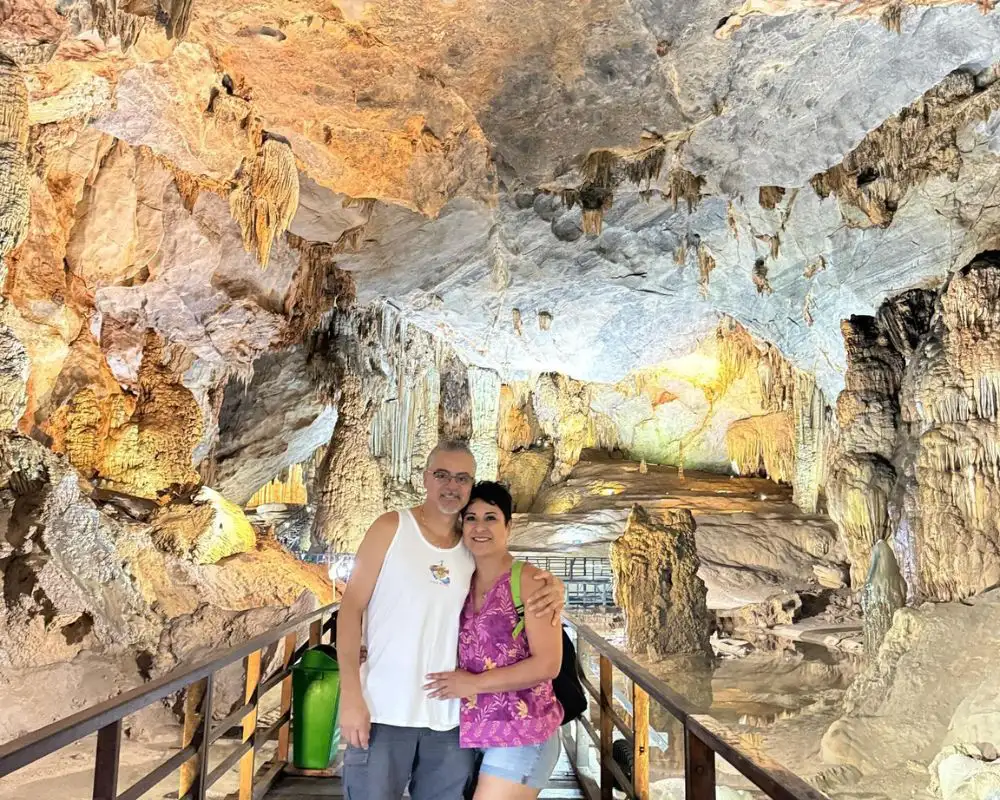
Son Doong Cave
As the largest cave in the world by volume, Son Doong Cave features a unique ecosystem, complete with its own jungle and river. Guided tours offer an exclusive look at this natural wonder, though access is limited to preserve its delicate environment.
Paradise Cave
Discovered in 2005, Paradise Cave stretches over 31 kilometers and is renowned for its spectacular stalactite and stalagmite formations. A wooden walkway allows visitors to explore its beauty easily.
Dark Cave
Dark Cave is not just a typical cave exploration; it is a full adventure experience. The cave is named for its dark interior, which contrasts with the bright, turquoise waters of the Chay River that flows near its entrance. Inside, the cave features stunning stalactites and stalagmites, as well as natural mud baths, which are a highlight for many visitors.
Hiking Trails
Popular Trails
Phong Nha-Ke Bang offers a variety of hiking trails, suitable for different skill levels. Trails pass through lush forests, past rivers, and up to stunning viewpoints.
Nuoc Mooc Eco Trail
This trail is perfect for those looking to experience the park’s biodiversity. It includes easy paths, suspension bridges, and opportunities to swim in the clear streams.
Hang En Cave Trek
This challenging trek takes you through dense jungle to Hang En Cave, the third largest cave in the world. The journey itself is as rewarding as the destination, with beautiful landscapes along the way.
Boating on the Son River
Boat tours on the Son River provide a scenic way to explore the park’s waterways and caves. These tours offer a unique perspective on the park’s natural beauty, with opportunities to see wildlife and karst formations. The river offers stunning views of the surrounding karst landscapes and lush vegetation. It’s a peaceful way to enjoy the natural scenery. While boating, you might spot various wildlife species along the riverbanks, including birds and small mammals.
Joining a guided tour can enhance your wildlife-watching experience, as local guides know the best spots and times to see different animals. You can read more about our tours:

Adventure Activities
- Zip-lining: For thrill-seekers, zip-lining through the park offers an exhilarating way to see the forest canopy and karst landscapes from above.
- Kayaking: Kayaking on the rivers and streams within the park provides a more intimate way to explore the waterways and enjoy the tranquility of nature.
- Rock Climbing: The park’s limestone cliffs offer excellent rock climbing opportunities for climbers of all skill levels. Guided climbing tours are available for those new to the sport.
What to eat in Phong Nha?
Bánh Xèo (Vietnamese Pancakes)
Bánh Xèo, meaning “sizzling cake,” is a crispy, savory pancake made from rice flour, turmeric, and coconut milk, filled with pork, shrimp, and bean sprouts. Served with fresh herbs and a tangy dipping sauce, this dish is a delightful combination of textures and flavors.
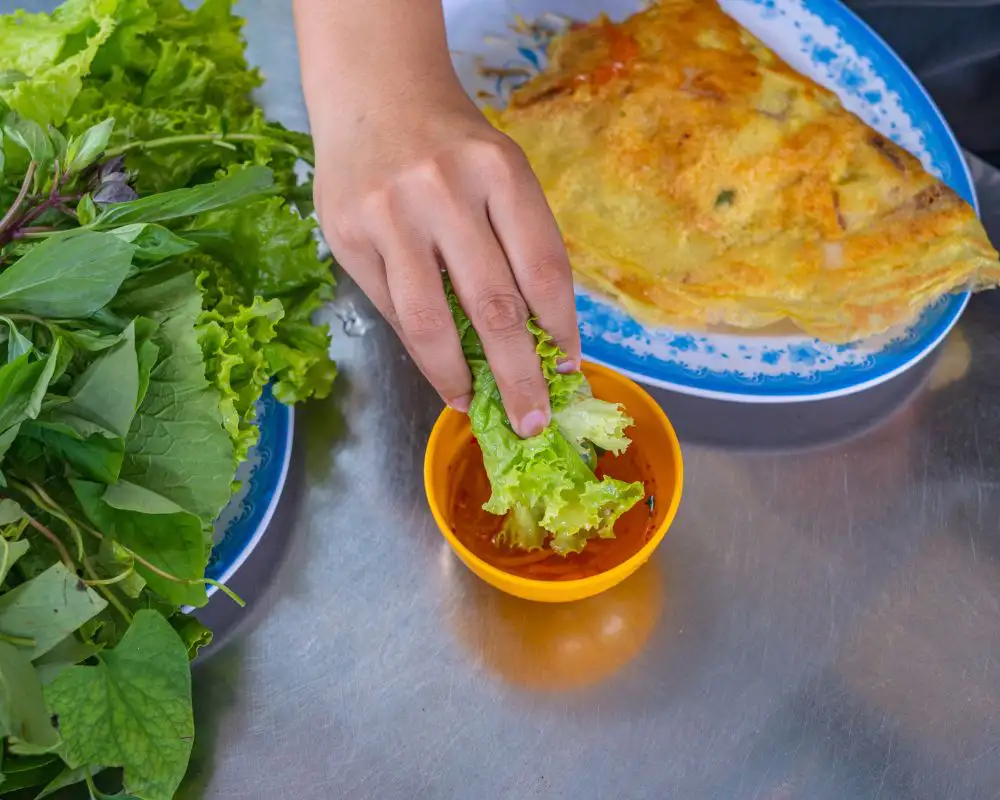
Cháo Canh (Vietnamese Noodle Soup)
Cháo Canh is a popular noodle soup in Quang Binh, made with thick rice noodles and a savory broth. It often includes pork, shrimp, or fish, and is garnished with fresh herbs and fried shallots. The soup’s simplicity and heartiness make it a comforting meal.
Bánh Lọc (Tapioca Dumplings)
These translucent dumplings are made from tapioca flour and filled with shrimp and pork. Bánh Lọc is typically steamed or boiled and served with a sweet and savory fish sauce. The chewy texture and flavorful filling make this dish a local favorite.
Bánh Khoái (Vietnamese Crepes)
Similar to Bánh Xèo but smaller and thicker, Bánh Khoái is a crispy crepe filled with pork, shrimp, and bean sprouts, topped with peanuts and served with a special dipping sauce made from soybeans. This dish is a perfect snack or light meal.
Nem Lụi (Grilled Pork Skewers)
Nem Lụi consists of marinated pork wrapped around lemongrass sticks and grilled over charcoal. These flavorful skewers are served with rice paper, fresh herbs, and a dipping sauce, allowing you to create your own fresh rolls.
Gỏi Cá Nghéo (Shark Salad)
A specialty of Quang Binh, Gỏi Cá Nghéo is a salad made from thinly sliced raw shark, mixed with herbs, spices, and a tangy dressing. This unique dish offers a taste of the local seafood and is a must-try for adventurous eaters.
Mì Quảng (Quang Noodles)
This regional noodle dish is made with wide rice noodles, turmeric-spiced broth, and a variety of proteins such as chicken, shrimp, or pork. Mì Quảng is garnished with fresh herbs, peanuts, and crispy rice crackers, providing a satisfying mix of flavors and textures.
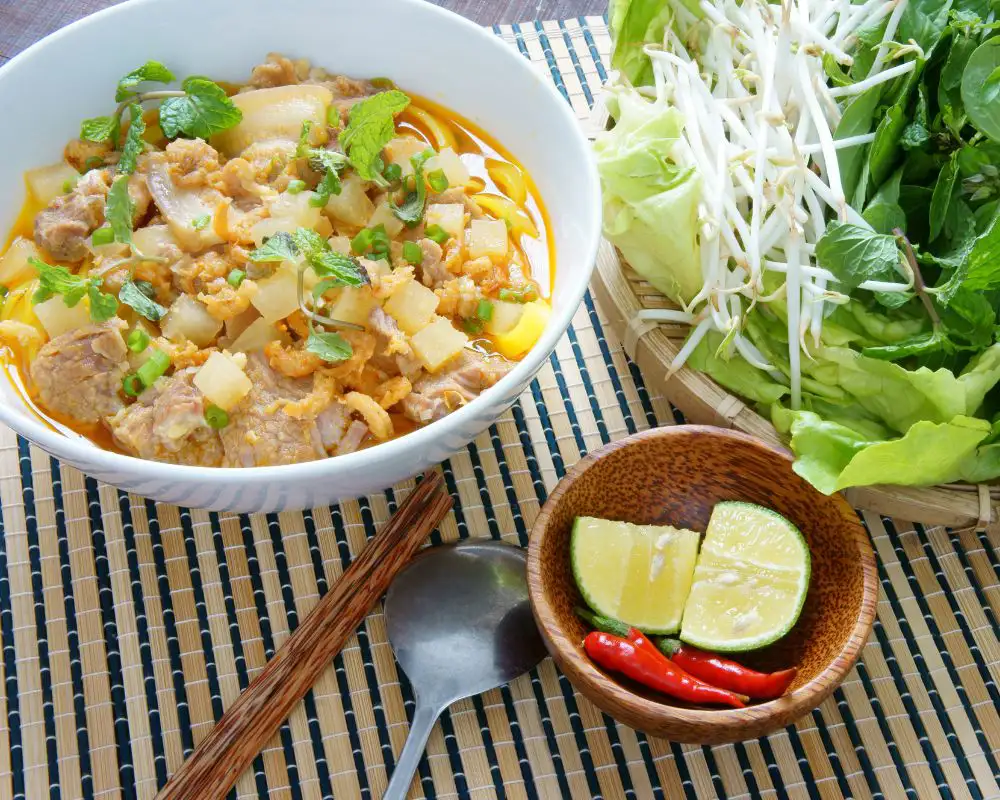
Where to Eat in Phong Nha?
The Phong Nha Street Food Market is a great place to sample a variety of local dishes. Here, you can find stalls selling everything from bánh xèo to nem lụi, allowing you to try multiple foods in one visit.
Several restaurants in Phong Nha serve traditional Quang Binh cuisine. Popular spots include Phong Nha Bamboo Cafe, Easy Tiger Restaurant, and Chày Lập Farmstay, where you can enjoy delicious local dishes in a cozy setting.
Recommended Accommodations
Easy Tiger Hostel
One of the most popular hostels in Phong Nha Ke Bang, Vietnam, Easy Tiger Hostel is known for its lively atmosphere, clean facilities, and helpful staff. It offers dormitory and private rooms, a swimming pool, and a bar with nightly entertainment. The hostel also organizes daily tours to the national park and surrounding attractions.
Phong Nha Farmstay
Phong Nha Farmstay is a mid-range option offering a blend of comfort and local charm. Located in a rural setting with beautiful views, it provides cozy rooms, a swimming pool, and a restaurant serving local and international cuisine. The farmstay also offers guided tours and activities such as biking and kayaking.
Chay Lap Farmstay
For a more upscale experience, Chay Lap Farmstay is an excellent choice. This eco-lodge offers comfortable accommodations set amidst lush gardens and natural surroundings. Guests can enjoy activities like biking, kayaking, and exploring nearby caves. The on-site restaurant serves delicious organic meals made from locally sourced ingredients.
Nguyen Shack – Phong Nha Eco Resort
This eco-friendly resort provides a unique and peaceful retreat with bungalow-style accommodations set along a river. The resort emphasizes sustainability and offers various activities, including boat tours, cave explorations, and cooking classes. It’s a perfect choice for nature lovers and those looking to unwind.
Victory Road Villas
Victory Road Villas offer a luxurious stay with spacious villas, modern amenities, and stunning views of the surrounding countryside. Each villa features a private terrace, outdoor seating, and beautiful decor. The property also includes a swimming pool, restaurant, and bar, making it ideal for families and couples seeking a premium experience.
How to get to Phong Nha-Ke Bang national park?
Traveling by Air
The most convenient way to reach Phong Nha-Ke Bang National Park is by air. The nearest airport is Dong Hoi Airport (VDH), located about 50 kilometers from the park. Dong Hoi Airport offers domestic flights from major cities such as Hanoi, Ho Chi Minh City, and Danang, operated by airlines like Vietnam Airlines, VietJet Air, and Bamboo Airways.
From Dong Hoi Airport, visitors can take a taxi or arrange a private transfer to Phong Nha-Ke Bang, which takes approximately 1 to 1.5 hours.
Traveling by Train
Another option is to travel by train to Dong Hoi Railway Station, the nearest train station to the park. Dong Hoi is well-connected with major cities in Vietnam, with the Reunification Express being a popular choice. Trains from Hanoi, Ho Chi Minh City, and other cities stop at Dong Hoi.
From the railway station, visitors can take a taxi or a local bus to reach Phong Nha-Ke Bang National Park, a journey that also takes about 1 to 1.5 hours.
Traveling by Bus
Several bus companies operate routes to Dong Hoi from major cities such as Hanoi, Hue, Danang, Hoian. Sleeper buses are a convenient and affordable option for long-distance travel.
Buses arrive at the Dong Hoi Bus Station, where travelers can transfer to a local bus or taxi to reach Phong Nha-Ke Bang National Park. Local buses are an economical choice, though they may take longer than taxis or private transfers.
Traveling by Private Car
For those who prefer to drive, renting a car is a viable option. From Hanoi, take National Highway 1A south to Dong Hoi, and from Hue, drive north on National Highway 1A. The drive from Dong Hoi to Phong Nha takes about 1.5 hours. Car rentals are available in major cities and at Dong Hoi Airport. Booking in advance is advisable, especially during peak travel seasons. The roads to the park are generally well-maintained, but drivers should be prepared for occasional rough patches and always drive carefully.
Local Transportation
Once in Phong Nha, visitors have several options for local transportation. Taxis are readily available and can be hired for trips within the park. For a more adventurous option, motorbike rentals are popular, allowing visitors to explore the area at their own pace. Bicycle rentals are also available, providing an eco-friendly way to discover the park’s trails and attractions.
Travel Tips
When visiting Phong Nha-Ke Bang, it’s important to pack appropriately. Essentials include comfortable hiking shoes, light clothing, rain gear, sunscreen, insect repellent, and a reusable water bottle. For caving, bring a good flashlight and sturdy gloves.
Safety is paramount when exploring the park. Always follow the guidance of local guides, stay on marked trails, and be prepared for changing weather conditions. In the caves, watch your step and use provided safety equipment.
Respect local customs and traditions, especially when visiting cultural sites and interacting with local communities. Dress modestly, ask for permission before taking photos of people, and avoid loud or disruptive behavior.


